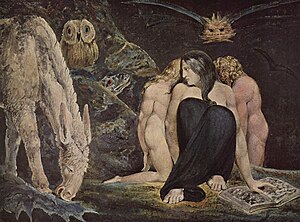 |
| o.g. Colored Pencil, 24" x 36", 2017 |
Grey Office is a non-commercial research office.
Territories of exploration are in the realms of archeology, botany, design, management, objects, philology, spaces, culture, religion, urbanism, & xenotopia.
TAGS
ASSEMBLY
(18)
RESEARCH
(17)
HUMAN
(15)
CULTURE
(14)
HISTORY
(14)
URBAN
(14)
MATERIAL
(13)
ANTHROPOLOGY
(12)
COLOR
(10)
CONSTRUCTION
(10)
FRAMES
(10)
PROCESS
(9)
OBJECTS
(8)
CITY
(7)
MYTHOLOGY
(7)
PHOTOGRAPH
(7)
XENOTOPIA
(7)
GREEN DESIGN
(6)
CHANGE
(5)
PAINT
(5)
SPACE
(5)
ANATOMY
(4)
HORTICULTURE
(4)
MYSTICISM
(4)
PUBLIC
(4)
CONCRETE
(3)
GREEN
(3)
LIGHTING
(3)
ORGANIC FOOD
(3)
RELIGION
(3)
SUSTAINABILITY
(3)
AIRBRUSH
(2)
CAFE
(2)
COMPLETE
(2)
COOKING
(2)
TEST
(2)
VIDEO
(2)
ENERGY CODE
(1)
INK
(1)
NYCECC
(1)
OPINION
(1)
STREET
(1)
WHITE
(1)
andTRADITION
(1)
SEARCH GREY OFFICE
MYTHOLOGIES: Text-ures
EDITORIAL
There are many scholars, more studied that I, who have analyzed why culture developed mythology; and this is a blog, not a dissertation.
My understanding is that we develop mythologies to explain the world. (Most) ancient Greeks did not believe that there was a literal person tossing lightening during a storm. Zeus myths go towards explaining the world in which they lived. These tales provided folks a way to rationalize their world, to create a culture. Stories are told between people, and these shared stories make up the fundamental attributes of culture, and this should never be underestimated.
Mythologies
1.1
Stories are told to each generation. These stories are passed from father to son, pastor to partitioners, troubadours to the stationary, friend to friend, community to community.
Each contains a vision of the world. Visions that share elements of truth and fiction. Structural elements and characters have changed names, forms, and moralities.
There are many scholars, more studied that I, who have analyzed why culture developed mythology; and this is a blog, not a dissertation.
My understanding is that we develop mythologies to explain the world. (Most) ancient Greeks did not believe that there was a literal person tossing lightening during a storm. Zeus myths go towards explaining the world in which they lived. These tales provided folks a way to rationalize their world, to create a culture. Stories are told between people, and these shared stories make up the fundamental attributes of culture, and this should never be underestimated.
Hekate - research
Marble statuette of triple-bodied Hekate and the three Graces
Period: Late Hellenistic
Date: 1st–2nd century A.D.
Culture: Roman
Medium: Marble
Dimensions: H. 12 in. (30.5 cm)
Classification: Stone Sculpture
Source: Metropolitan Museum of Art, New York
Hekate, Goddess of Darkness, from the Goddesses of the Greeks and Romans series
(N188) issued by Wm. S. Kimball & Co.
Publisher: Issued by William S. Kimball & Company
Lithographer: Lithography by Ketterlinus Lithography Company (Philadelphia, Pennsylvania)
Date:1889
Dimensions: Sheet: 2 3/4 × 1 1/2 in. (7 × 3.8 cm)
Classifications: Prints, Ephemera
Source: Metropolitan Museum of Art, New York
Hecate, or The Night of Enitharmon's Joy
Artist: William Blake
Year: 1795
Dimensions: 44 cm × 58 cm (17.32 in × 22.83 in)
Source: Tate Gallery, London
Subscribe to:
Posts (Atom)







